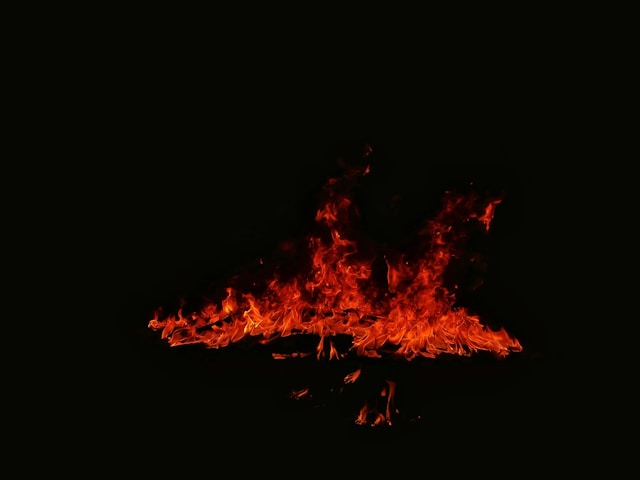Cal Fire Director Joe Tyler urges heightened caution as California battles an unprecedented wildfire season, with fires already scorching vast areas and exacerbating the state’s wildfire crisis
California’s wildfire season has begun with unprecedented intensity, as fires have already burned through five times the average amount of land for this time of year. Joe Tyler, the director of the California Department of Forestry and Fire Protection (Cal Fire), revealed that the state has responded to over 3,500 wildfires so far, consuming nearly 220,000 acres. This alarming figure significantly exceeds what is typically expected by mid-July, marking an early and aggressive start to the wildfire season.
Speaking at a news conference on Wednesday, Tyler emphasized the severity of the situation, attributing the heightened fire activity to a combination of strong winds and a recent heatwave. “We are not just in a fire season, we are in a fire year,” Tyler declared, urging residents to exercise extreme caution to prevent further ignitions.
Embed from Getty ImagesThe wildfires are not confined to California alone. Across the US West, a prolonged heatwave has dried out the landscape, increasing the risk of wildfires. States like Oregon and Nevada have also experienced record-breaking temperatures, further exacerbating the fire threat. California’s Governor Gavin Newsom highlighted the role of climate change in these extreme conditions, stating, “Climate change is real. Those extremes are present every day in the great state of California.”
An unusually wet winter left California landscapes covered in grasses that dried quickly as temperatures rose, creating abundant fuel for wildfires. Crews are now battling multiple blazes in scorching conditions, including a persistent 34,000-acre fire known as the Lake Fire in Santa Barbara County, which has prompted evacuation orders for about 200 homes.
In Oregon, firefighters are contending with the Larch Creek Fire, which has grown to over 11,000 acres. Despite lower temperatures and calming winds aiding the firefighting efforts, the fire danger level remains extreme. One firefighter was treated for heat-related injuries.
Hawaii is also grappling with wildfire challenges. Haleakala National Park on Maui was closed as firefighters tackled a blaze on the mountain slopes. Visitors in more than 150 vehicles were stranded until early Thursday morning due to blocked roads.
The heatwave continues to break records across the region. Las Vegas experienced its fifth consecutive day of temperatures at or above 115°F (46.1°C), setting a new record. Since June 1st, the city has broken 16 heat records, including an all-time high of 120°F. The extreme heat is suspected in multiple deaths across several states, including California, Oregon, Arizona, and Nebraska.
In California, Santa Clara County officials are investigating 19 potential heat-related deaths, including three homeless individuals. Oregon has reported 10 potential heat-related deaths. Additionally, tragic incidents have occurred in national parks and other states, underscoring the deadly impact of the ongoing heatwave.
Analysis
Political
The escalating wildfire crisis in California and the broader US West has significant political implications. Governor Gavin Newsom’s comments on climate change highlight the need for robust policy responses to mitigate its effects. The state government faces mounting pressure to enhance firefighting resources and develop comprehensive climate adaptation strategies. Federal and state cooperation will be crucial in addressing the immediate crisis and implementing long-term measures to prevent future disasters.
Social
The wildfires and associated heatwave underscore pressing social issues, particularly regarding vulnerable populations. The investigation into heat-related deaths, including those of homeless individuals, highlights the need for improved social safety nets and emergency response systems. Communities are forced to confront the reality of climate change and its impact on daily life, prompting discussions on resilience, preparedness, and social equity.
Racial
The wildfire crisis disproportionately affects marginalized communities, often with limited access to resources and support. Many of the affected areas are home to lower-income and minority populations, exacerbating existing inequalities. Addressing these disparities requires targeted support and inclusive disaster response strategies that consider the needs of all community members.
Gender
Gender dynamics play a role in the wildfire crisis, particularly in evacuation and recovery efforts. Women, often primary caregivers, face additional burdens during disasters, balancing care for children and elderly relatives with the need to secure safety and resources. Ensuring gender-sensitive approaches in disaster management can help address these challenges and promote equitable recovery.
Economic
The economic impact of the wildfires is substantial, with significant costs associated with firefighting efforts, infrastructure damage, and loss of property. Businesses in affected areas face disruptions, and the broader economic implications ripple through supply chains and local economies. The agricultural sector, vital to California’s economy, is particularly vulnerable, facing threats to crops and livestock. Long-term economic resilience will require investment in fire prevention, climate adaptation, and community recovery initiatives.
